The Ultimate Guide to Location Scouting: Essential Techniques for Film, Photo & Event Venues
One of the biggest problems that first time independent filmmakers face during production is not being able to find suitable locations to film their projects. While it would be awesome to build custom-made sets for every project you want to shoot, we know it's not always possible. Which is why we here at Giggster perfect for your scouting needs. Whether you're looking for picturesque locations rentals for photoshoots, or awesome venue rentals for film shoots, our expansive library features tons of listings to choose from.
So all said, here is what we think you could do to make the location scouting bit a lesser hassle and less time-consuming that it's made out to be.
List of Contents in the Ultimate Location Scouting Checklist
In this guide, you will learn the following:
- Overview: Location Scouting
- Carrying Out Your Search
- Location Scouting Tips
- Tech Scouting Tips
- All About Film Permits
- Things to Keep in Mind
Let's jump right into it.
Rent a location for your next film or photo shoot project on Giggster – A better way to book locations.
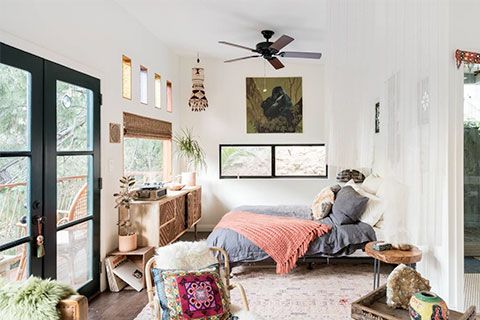

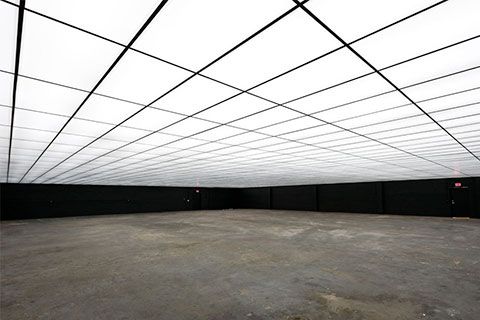

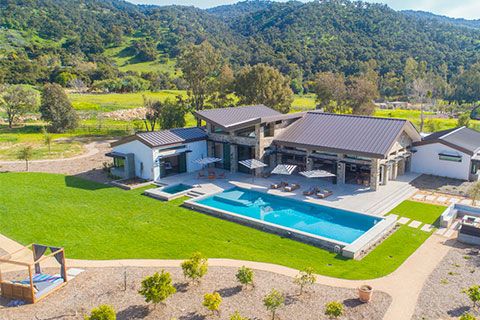
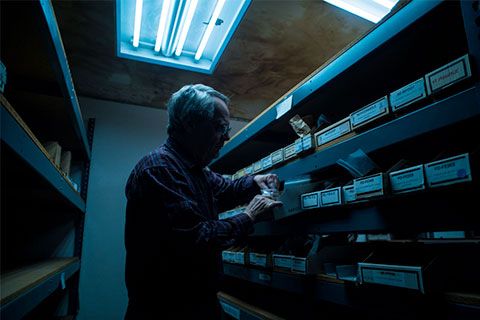

Location Scouting: An Overview
Location scouting is one of the most important parts of the pre-production stage of filmmaking and photography. It involves searching for suitable places to conduct shooting, outside of the studio.
What does "suitability" mean? A location can be considered 'suitable' if it follows the overall sense of aesthetic that the project demands, is within the location budget allocated for the project, is logistically feasible – i.e. not too far away to travel for cast and crew, catering, and other members of the team, is technically feasible – i.e. availability of power outlets or generators, is workable from the perspective of lighting and sound, is given a 'go-ahead' by neighbors, local government, and law enforcement — the list can go on.
In short a location must
- Look right for the story
- Have co-operation from the owner for listing
- Be feasible logistically
Location scouting typically involved two kinds of scouts: a preliminary location scout followed by a detailed tech scout.
Location Scout
During a location scout, you're essentially going to different places and seeing which ones fit your script and your requirements the best, and understanding which ones can provide you with the most creative potential and opportunities.
Think of it as going on different first dates. There's no commitment, and it's a chance for you as well as the property owner to understand each other's requirements and needs, while making it clear what you have to offer and what you can get in return.
Depending on the size of your production, this trip can be just you alone, or could include your director, a location manager, the DP, the production designer, as well as your sound engineer.
Each member of your team would be studying the location from their own perspective.
This scout is extremely important, as it gives you an understanding of the vibe and feel of a location, while also having a chance to ask any and all questions that you may have for the property owner or representative. You should ask all your questions during this scout, and it's best to not leave anything to a surprise on the day of the shoot.
Tech Scout
The tech scout is the second date. This is when you gain a much deeper understanding of a location that you've shortlisted. This scout involves your DP, Gaffer, Grip, Sound Recordist and the AD if available.
This scout is also typically much longer than a location scout – sometimes lasting multiple hours.
During the tech scout, each of your team members gains a deeper understanding of the location from their perspective – the grip/electric crew will look over the power availability and distribution, staging and storing equipment, dealing with creaky floorboards and/or uneven flooring. The sound recordist will understand the environment and note down any potential clashes or disturbances. The AD will plan for the shoot day. Here's a blog on the 5 simple steps to take for successful tech scout for any location, in case you're wondering what all needs to happen for a tech scout.
You may not always have the privilege of conducting two separate scouts, and in many cases you'll have to combine both scouts into one.
Back to top
Finding Film Locations by Yourself
Writing your film was hard enough already. The next step is to actually go out and film it. Unless you plan to film every single shot in your bedroom, you're probably thinking of where you can shoot your film.
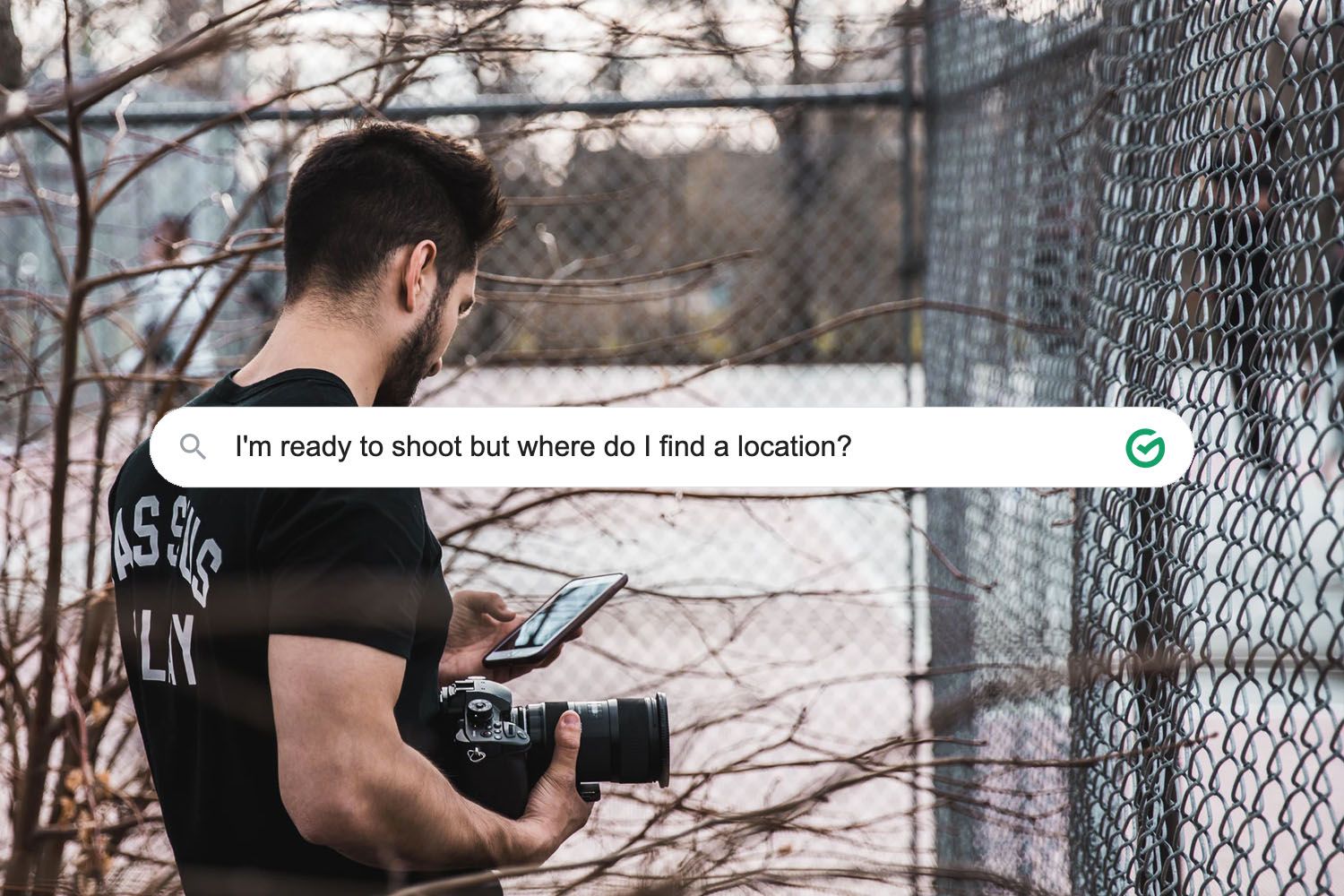
If you're a first-time or low-budget filmmaker, chances are that you'd like to save money on hiring a location scout. You don't mind getting your hands (and your car) dirty, driving around town to look at potential locations, making notes and decisions on the way.
In today's world, it's extremely easy to find locations by yourself. Just like Airbnb revolutionized the vacation rental industry, there are platforms today that you can use, like Giggster, to find film locations by yourself. That said, here are the steps you need to take while finalizing on a property listing:
Step 1: Determine The Kind of Location You Need
By now, you should have already finished your script. With the script in hand (and in mind), you should determine the kind of locations you need for all your shots.
Do you need a mansion? An abandoned-looking place? A gas station restroom? A hotel room? We suggest you make a list of locations you need, categorized by the scene in your film. If your production is simple and requires only one broad location – this list would have only one location. And that's okay.
Step 2: Determine Your Budget
This step is quite self-explanatory.
Locations are not always cheap, and neither are they always expensive. As a filmmaker you should know the ballpark amount which you're ready to spend, since without knowing your budget you'll be quite lost in your location search.
Step 3: Figure Out Your Timeline
Depending on your script, you may need a couple of hours, an entire day, or multiple days at each of your locations. This has an effect on your budget, so it's very important that you assess and predict this as accurately as possible, keeping buffers in place in case something goes wrong or gets delayed.
This said, not all hosts will be okay with overtime, and it almost always costs you more than booking for that extra time beforehand. You also need to decide the date(s) on which you're planning your shoot, so that you can pass this information on to property owners and hosts to determine where the location is actually available when you want it.
Step 4: Determine Your Shooting Region
Before you narrow down specific locations, you want to be sure of the city or the area within your city that you want to film in.
There are many factors that weigh in on this decision:
- Film permits can be more difficult to obtain in certain areas of LA for instance, and easier (and cheaper) to obtain in certain other areas. It's best to be aware and learn about the rules of film permits before you begin production.
- Another factor to consider is how easily your cast and crew can get to the shooting region. If your team is based out of Santa Monica, it may be easier to get to Venice than to get to Long Beach or Burbank, for instance.
- If you're shooting significantly outside your city, you should factor in the cost of lodging for your cast and crew, as well as parking costs. All of these things can unexpectedly create a dent in your budget, leaving with you with less money for things that are more important.
- Lastly, but definitely as important - catering. We've put together a list of the top 15 production catering options in LA that you can rent for your project.
Step 5: Start Your Search
Once you've figured out your requirements, budget, timeline and broad area of shooting, the next step is to actually find locations to consider for your shoot.
Naturally, our number one recommendation to start your location search would be to go to Giggster.com, choose your location, and look for what you have in mind.
Giggster uses full-text search. This means that if you're looking for a mansion, you can just type in "mansion" in our search box and voila, you'll see mansions. We even have specially curated lists for different kinds of projects. So if you're looking for photo studios to rent, or filming locations to rent, be sure that our search shows you the most conducive locations for each of these.
Step 6: Contact the Owners/Representatives
Once you've found a list of properties that fit your needs and budget, you can go ahead and message their owners, giving them details about your project, your dates, and any specific requirements you need from the host.
You can then schedule a location scout to have a better look at the property and narrow your shortlist further.
Is this your first time location scouting? Read these 9 tips on film scouting from a veteran LA host.
Sometimes one scout isn't enough – many filmmakers prefer to do a tech scout after the initial scout to iron out smaller and finer technical details about the location and its suitability for filming their specific project. Read this article to learn 5 simple tips for doing your first tech scout.
Step 7: Book Your Location
After the scout, you can go back to Giggster and message the host again if you're interested in booking their property. You can then pay right there on Giggster, and you're done!
Congratulations on your first film location booking!
Back to top
Location Scouting Tips from a Veteran LA Host
Entering a stranger's home is always a bit weird – but fortunately, there are several steps that you can take to make scouting a breeze and give yourself the best possible chance of landing your preferred filming location.
In the video above Reagan, a veteran host with Giggster, gives us his best tips on how to carry out a location scout in the best way possible. As a host himself, his tips come from years of experience hosting scouts and shoots in his very own home.
As mentioned earlier, a location scout is like a first date. You want to make a good first impression on the host, and be as respectful as possible. Who knows, maybe if make a good enough impression and the host may even give you a discount or extra perks!
You can read our article on film location scouting from a veteran Los Angeles host to know more in full detail, but in short:
Before considerations of filming and logistics, the top priority of your initial film scout should be communicating to the property owner that you're trustworthy, professional, and low-risk.
Nevertheless, here's a quick rundown of the 9 tips you can follow on your location scout:
- Know the Value of the Location You're Visiting<.li>
- Share All the Sticky Details Upfront
- Arrive to Your Film Scout 15 Minutes Early
- Introduce Your Team
- Ask Permission Before You Do Anything
- Keep Your Scout Under 20 Minutes
- Ask Questions (and write down the answers)
- List The Ways You're Going To Protect The Property
- Don't Communicate Your Final Decision on the Scout
Like most aspects of production, the film scouting process can be stressful and unpredictable, especially if you're going through the process for the first time. While hiring a professional location scout is a great option if you can afford it, if you're planning on finding and scouting a location yourself, this list of insider tips should provide a solid starting point for communicating your professionalism.
Back to top
Simple Steps to a Successful Tech Scout
Once your initial location scouts are done, and you've finalised one or two locations that you're seriously considering, the next step is to do a tech scout, that allows you to gain a deeper understanding of the location and help make that final decision between one or the other.
If you've never done a tech scout before, it can seem pretty overwhelming.
What’s a tech scout and how does it help?
Simply put, a tech scout, or a technical scout, involves visiting a location with an intention to figure out the final details of filming at the space. These requirements can be technical or legal in nature.
A tech scout will help figure out exactly what camera and lighting equipment you might require, what the legalities of using the space are, and how to make use of the property to the fullest.
It sounds like a lot, and it kind of is. Which is why it's also best if you take some of your crew members with you. If you don’t have your crew, that’s okay too, but it’s going to take a lot longer to go over the 5 different department roles.
First thing, be sure to carry a camera, a couple of stand-ins (traffic cones would do but you’d need to factor in the right height) and some pocket snacks, because it might take some time. Now with your camera in hand and snacks in your pocket, it's time to roll in!
1: Technical (with your gaffer)
The technician of the group, the gaffer is arguably the one person who makes a property function as a set. Here’s a checklist for what the gaffer has to do at the tech scout:
- Ask the property rep how many of the electrical fixtures work, and which of them you can use.
- Check for outlets, and make sure to note where and how many are available.
- Find the breaker box and ensure there’s a power grounded electric supply to run lights, cameras, hair and makeup, sound and anything else you’d need.
- Be sure to note the order or label the outlets and breakers, this will really help save on time.
- Check with the Director & DOP if there’s any special requirements in terms of equipment and ensure this meets the voltage limits. If not, use a separate circuit for these items.
- Arrange for power and/or battery backup if you’re shooting outdoors.
- Make sure there’s enough space to set up the action as well as the equipment for each shot.
- Are there any props/set changes? Take pictures and measure the dimensions. This will really help your set director.
- Lights – how many, which ones and where? Be sure to account for natural lighting during the different times of day.
- How many cameras are required? Do any of them need rigs or tracks? Any special filters? That’s another few questions to answer.
- Ensure to allot a time frame for each shot so as to not waste time on the day of the shoot.
- Be sure to improvise any sequence on the spot to draw the most out of the location.
- Run a cursory check and find out if there’s any institutions or offices in the area, and find out if there could be any potential clashes or disturbances.
- Point out any odd noises, untimely sounds or anything that might interfere with the audio quality.
- Keep in mind the location’s proximity to institutions. Schools, universities and offices all have their own loud hours and filming at a location close to this will bring up issues that could have been avoided.
- Check whether there can be any air traffic, subway, rail or boat traffic during shoot time.
- Check for anything that might interfere with the audio recording such as static and frequencies.
- Finding the right location permits and insurances.
- Providing separate spaces to the talent away from the noisy net.
- Checking for any art installations or works that might require artist approval.
- Account for animals and/or explosives or anything that might require special permits.
- Mark out space for the different departments work areas and equipment storage areas on the day of the shoot.
- Managing the food and catering, and the space for it.
- Be sure you know what you have access to regarding amenities and facilities.
- Managing expectations. VFX can accomplish anything but without a hands on experience it’s impossible to estimate the time involved. So be sure to speak out when there’s an unnecessarily hard shot involved because of the location.
- Feasibility and realism of the film should be taken into account while planning post production during this stage.
- Before you finalise your location, give FilmLA a call to discuss about your location and intended filming plans. They can help guide you through permit requirements, as well as speak to you about the specific area/location you're interested to shoot in.
- Before you can apply for your permit, you will be required to furnish proof of liability insurance. The exact requirements may vary depending on the areas you intend to film in and the activities you intend to conduct.
- Submit your application for the film permit with FilmLA. This is an easy process that you can do online. Do note that FilmLA may ask you for additional requirements such as a filming survey, meetings, additional permits, utilizing a FilmLA monitor in sensitive areas, or others.
- FilmLA will then distribute official "Notices for Filming" to all residences and business in the proximity of your location, in order to inform them about when you're filming, activities that you're filming, and contact details.
- Pay for your permit – you can pay online or offline, using a variety of methods. This is when you get your finalized film permit that allows you to begin filming.
2: Lights & Cameras (Director & DOP)
The duo with the most to do, the Director & DOP have to mentally play out the entire action in their minds, and then work backwards to figure out how to accomplish that in the space. So what does their checklist look like? Here it is:
3: Sound (Sound Mixer)
The sharpest one of the lot, the sound mixer checks out all things auditory. After all, no one can sit through badly recorded audio. Here’s the complete checklist for the sound mixer/you to go through in the sound department:
4: Permits & Logistics (Line Producer)
The sharply dressed person who does all the paperwork, the line producer has a tough and underappreciated job. Here’s what it consists of:
5: Post Production & VFX (Visual Effects Supervisor)
The one who doesn’t join in often, the visual effects supervisor is necessary for projects where there’s a considerable amount of post production and VFX involved. In most cases the director, project head, or you, have to be responsible for their checklist, which looks a bit like this:
The most exciting part is that you would have to do this at each of your shortlisted locations, so be sure to pack those snacks. Once you’ve done this, you can figure out how to fine tune each location to meet your shoot requirements.
Back to top
All About Film Permits
You have your story, your cast, your locations... (if you don't, you know where to go for the best location options to choose from for photo or film) but wait – what's that you hear about a film permit? Do you need one? How much does it cost? How long would it take to receive one? Read on to find the answers to all of your questions.
Permits can be tricky to think about, and can sometimes take longer than expected. It's important that you think about the permitting logistics for the locations that you're scouting, since different cities and areas of cities have different rules, timelines and deadlines when it comes to permits.
What is a film permit?
A film (or stills) permit allows you to legally carry out your production in the region that gave the permit. A permit is always issued prior to the shooting, after submitting details about the shoot including locations, dates, times, equipment, cast and crew, use of special effects, pyrotechnics, actions and stunts.
It is usually the responsibility of the location manager of the shoot to obtain a permit, and every city and state has an office that handles permitting. In Los Angeles, film permitting is handled by a non-profit organisation called FilmLA
.When do I need a film permit?
In short, if your production is a commercial one, intended for profit and sale – whether it is stills, motion or digital, for print, TV, theatres or even the Internet, you are required to obtain a permit prior to beginning shooting.
In many cases, even if your project is for non-profit or educational filming, you may still require a film permit – although this depends on the city you want to shoot in. For example, the City of Santa Monica requires you to have a permit even for non-profit filming, so does the City of Orange. I'd advise you to check on this with the local government for the city you want to shoot in.
If your project has no commercial value – it's something that you're shooting for your own (and friends') enjoyment without any large, professional equipment, you probably don't need a permit.
Do I need a film permit if I'm a student?
You still need a permit for student films. However, you're in luck: FilmLA offers significantly cheaper student permits – starting at $26 for a simple permit. You'll however need a proof of student status as well as a letter from your instructor stating that the project is for educational, non-commercial use.
FilmLA has significant staff resources to help students and other first-time filmmakers with permit-related challenges – they're truly there to help you out, and you should make sure you utilize all of their resources to your advantage! They even offer free help from their Production Planning department if you're a student working on your senior thesis or any other more involved project.
Do I need a film permit for YouTube?
This is a tricky one. Basically, if your intention is to upload it to YouTube (or anywhere else for that matter) for personal, non-monetized use and sharing, you probably don't need a permit. If you are monetizing your video and earning significant ad revenue from it, it's best to get a permit.
How much will a film permit cost?
The cost of your film permit will vary depending on the exact location(s) you want to film in, but the basic application fee is $685 for a motion permit and $65 for a stills permit. There are fees on top of that which again will vary – this is just to give you a ballpark figure.
How do I obtain a film permit?
In Los Angeles, the process is handled by FilmLA, a not-for-profit organisation. The following is a rough outline of the steps to be followed:
How long would the film permit take to get processed?
You need a minimum of 3 days to get a permit approved. The reason for this is that the LAPD has to see and approve every permit application. However, other delays can always pop up, and we recommend that you budget enough time for this.
There you go – our rough guide to getting a film permit in the City of Los Angeles. If you're still in the beginning stage of your production planning process and are looking for locations, have a look at the Giggster website! You'll be able to find thousands of filming locations in LA, SF, New York, Chicago and Atlanta.
Back to top
Common Mistakes: Things to Keep in Mind
Even if you think you're doing everything right, there are still some things that you want to keep in mind when you're searching and scouting for locations. Many a time, things slip through the cracks and you find yourself in an avoidable situation – how can you prevent this?
Here are some common mistakes that first time filmmakers make during the scouting process:
Scouting Too Much
We get it, sometimes the initial scout didn't satisfy you too much, or a critical member of your team wasn't able to make it the first time and now wants to see it again.
While one or maybe even two location scouts is OK for a location, you don't want to go over that. It's important to respect the property owner's time – especially since they aren't getting paid for these scouts. Sometimes hosts may even ask to charge you for additional scouts, since they're still spending valuable time on them.
Assuming that the Entire Property is Yours
You're paying $3000 a day for that mansion in the Hollywood Hills. You should have full access to it, right? Not always. Not unless the host explicitly states that you do.
It's important, during your scout and possibly before, to ensure that you relay to your host all of the areas in the house that you'll be using for your shoot. This gives the host a chance to give you their permission, or refusal, for certain areas – most commonly the master bedroom or their child's bedroom.
Don't make an assumption – ask, during your scout, the areas that you are and are not allowed to shoot in.
Discussing Pricing During the Scout
We've seen many first time and inexperienced filmmakers make this mistake. You don't want to haggle or discuss pricing in person during the scout. You always want to have this discussion over email or text, in writing, so that you have a reference point to go back to in case there's a misunderstanding any time.
Also, when discussing over email or text, you're less likely to make decisions in haste, and/or fail to negotiate. Moreover, it might just be possible that the person handling your scout doesn't have the authority to discuss pricing with you. Either ways, this is something you want to avoid.
Not Double Checking Dates
This is probably the worst kind of mistake to make – showing up at your scout a day earlier, or worse, a day late.
Always double check when your scouting and shooting dates are, so that you don't have any doubt about when the host is expecting you at their property.
Not Having Contact Information of Your Scout Host
It's best to have the phone number of the person who you're expecting to meet at the property – in order to coordinate last minute changes to plans or delays.
Asking Questions to the Wrong Person
It's quite possible that the person giving you the tour or the scout is not the person who knows the answers to the questions you're asking. Many times, the property owner's son, grandfather, assistant... someone who's just been asked to open the door for you – is not the one that can answer the detailed questions that you may have.
If you know that the representative you're with doesn't have the authority, you can ask them to relay these questions to someone who has the authority to answer them, or for them to put you in touch with that person directly.

The location scouting process is not always easy, but tools like Giggster can make it a breeze. Browse 1000's of locations, save your favorites to a project board, then share and collaborate with your team. We hope reading this comprehensive guide to film scouting gave you the confidence to begin your location search!

